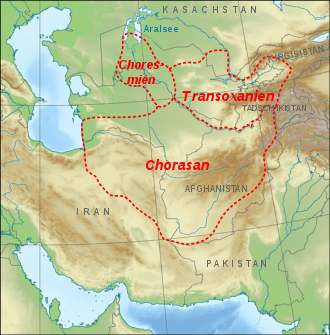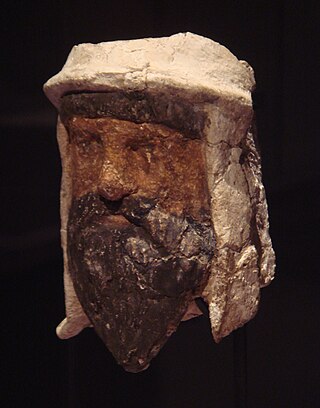
Tajikistan harkens to the Samanid Empire (819–999). The Tajik people came under Russian rule in the 1860s. The Basmachi revolt broke out in the wake of the Russian Revolution of 1917 and was quelled in the early 1920s during the Russian Civil War. In 1924, Tajikistan became an Autonomous Soviet Socialist Republic of the Soviet Union, the Tajik ASSR, within Uzbekistan. In 1929, Tajikistan was made one of the component republics of the Soviet Union – Tajik Soviet Socialist Republic – and it kept that status until gaining independence 1991 after the dissolution of the Soviet Union.

Uzbekistan is a landlocked country in Central Asia. It is itself surrounded by five landlocked countries: Kazakhstan to the north; Kyrgyzstan to the northeast; Tajikistan to the southeast; Afghanistan to the south, Turkmenistan to the south-west. Its capital and largest city is Tashkent. Uzbekistan is part of the Turkic languages world, as well as a member of the Organization of Turkic States. While the Uzbek language is the majority spoken language in Uzbekistan, Russian is widely used as an inter-ethnic tongue and in government. Islam is the majority religion in Uzbekistan, most Uzbeks being non-denominational Muslims. In ancient times it largely overlapped with the region known as Sogdia, and also with Bactria.
The Uzbeks are a Turkic ethnic group native to the wider Central Asian region, being among the largest Turkic ethnic group in the area. They comprise the majority population of Uzbekistan, next to Kazakh and Karakalpak minorities, and are also minority groups in Afghanistan, Tajikistan, Kyrgyzstan, Kazakhstan, Turkmenistan, Russia, and China. Uzbek diaspora communities also exist in Turkey, Saudi Arabia, United States, Ukraine, and other countries.

Bactria, or Bactriana, was an ancient Iranian civilization in Central Asia based in the area south of the Oxus River and north of the mountains of the Hindu Kush, an area within the north of modern Afghanistan. Bactria was strategically located south of Sogdia and the western part of the Pamir Mountains. The extensive mountain ranges acted as protective "walls" on three sides, with the Pamir on the north and the Hindu Kush on south forming a junction with the Karakoram ranges towards the east.
Turkestan, also spelled Turkistan, is a historical region in Central Asia corresponding to the regions of Transoxiana and Xinjiang.

Khwarazm or Chorasmia is a large oasis region on the Amu Darya river delta in western Central Asia, bordered on the north by the (former) Aral Sea, on the east by the Kyzylkum Desert, on the south by the Karakum Desert, and on the west by the Ustyurt Plateau. It was the center of the Iranian Khwarezmian civilization, and a series of kingdoms such as the Afrighid dynasty and the Anushtegin dynasty, whose capitals were Kath, Gurganj and—from the 16th century on—Khiva. Today Khwarazm belongs partly to Uzbekistan and partly to Turkmenistan.

The Fergana Valley in Central Asia lies mainly in eastern Uzbekistan, but also extends into southern Kyrgyzstan and northern Tajikistan.

Khorasan, also called Traxiane during Hellenistic and Parthian times, was a province in northeastern Iran until September 2004, when it was divided into three new provinces: North Khorasan, South Khorasan, and Razavi Khorasan.

The Samanid Empire, also known as the Samanian Empire, Samanid dynasty, Samanid amirate, or simply as the Samanids, was a Persianate Sunni Muslim empire, of Iranian dehqan origin. The empire was centred in Khorasan and Transoxiana; at its greatest extent encompassing Persia and Central Asia, from 819 to 999.

The Muslim conquest of Persia, also known as the Arab conquest of Iran, was carried out by the Rashidun Caliphate from 632 to 654 and led to the fall of the Sasanian Empire, as well as the eventual decline of the Zoroastrian religion.
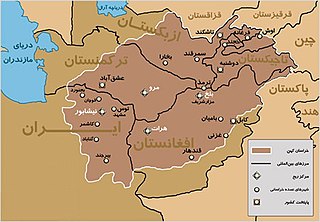
Greater Khorāsān, or Khorāsān is a historical eastern region in the Iranian Plateau between Western and Central Asia.
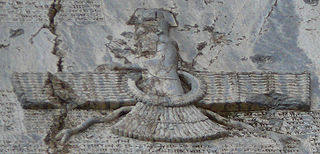
Greater Iran or Greater Persia, also known as Persosphere, is a sociocultural region in which Iranian traditions and Iranian languages have had a significant impact. It spans parts of West Asia, the Caucasus, Central Asia, South Asia, and parts of East Asia, specifically Xinjiang, China. The region is defined by having been long-ruled by the dynasties of various Iranian empires, under whom the local populaces gradually incorporated some degree of Iranian influence into their cultural and/or linguistic traditions; or alternatively as where a considerable number of Iranian peoples settled to still maintain communities who patronize their respective cultures, geographically corresponding to the areas surrounding the Iranian plateau. It is referred to as the "Iranian Cultural Continent" by Encyclopædia Iranica.

The SasanianEmpire or Sassanid Empire, also known as the Second Persian Empire or Neo-Persian Empire, was the last Iranian empire before the early Muslim conquests of the 7th–8th centuries AD. Named after the House of Sasan, it endured for over four centuries, from 224 to 651 AD, making it the second longest-lived Persian imperial dynasty, after the Arsacids. The Sasanian Empire succeeded the Parthian Empire, and re-established the Persians as a major power in late antiquity alongside its neighbouring arch-rival, the Roman Empire. The empire ended with the Arab conquest of Iran.
Abū ʿAbd al-Raḥmān ʿAbd Allāh ibn ʿĀmir ibn Kurayz was a Rashidun politician and general, serving as governor of Basra from 647 to 656 AD during the reign of Rashidun Caliph Uthman ibn Affan. He was a cousin of the Caliph through his father. He is known for his administrative and military prowess including his successful campaigns of reconquest and pacification of former territories of the Sasanian Empire in what is now Iran and Afghanistan.
The Battle of Oxus River was a significant battle in the 7th century, fought between the combined armies of the Sassanid and Göktürk Empires against the Muslim Arab army that had overrun Persia. Following his defeat, the last Sassanid Emperor, Yazdegerd III, became a hunted fugitive who fled to Central Asia and then to China.
The history of Bukhara stretches back millennia. The origin of its inhabitants goes back to the period of Aryan immigration into the region. The city itself, currently the capital of the Bukhara Region (viloyat) of Uzbekistan, is about two and a half thousand years old. Located on the Silk Road, the city has long been a centre of trade, scholarship, culture, and religion. During the Golden age of Islam, under the rule of Samanids, Bukhara became the intellectual centre of the Islamic world. In medieval times, Bukhara served as the capital of the Khanate of Bukhara and was the birthplace of Imam Bukhari.

The Mongol conquest of Persia comprised three Mongol campaigns against Islamic states in the Middle East and Central Asia between 1219 and 1258. These campaigns led to the termination of the Khwarazmian dynasty, the Nizari Ismaili state, and the Abbasid Caliphate of Baghdad, and the establishment of the Mongol Ilkhanate government in their place in Persia.
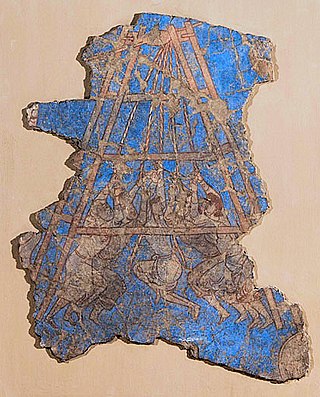
The Muslim conquest of Transoxiana or Arab conquest of Transoxiana were the 7th and 8th century conquests, by Umayyad and Abbasid Arabs, of Transoxiana, the land between the Oxus and Jaxartes rivers, a part of Central Asia that today includes all or parts of Uzbekistan, Tajikistan, Kazakhstan, and Kyrgyzstan.

During the mid-eighteenth century the Afsharid empire of Nader Shah embarked upon the conquest and annexation of the Khanates of Bukhara and Khiva. The initial engagements were fought in the late 1730s by Nader Shah's son and viceroy Reza Qoli Mirza who gained a few notable victories in this theatre while Nader was still invading India to the south. Reza Qoli's invasions of Khiva angered Ilbars Khan, the leader of Khiva. When Ilbars threatened to make a counter-attack Nader ordered hostilities to cease despite his son's successes and later returned victoriously from Delhi to embark on a decisive campaign himself.
The Muslim conquest of Khorasan, or Arab conquest of Khorasan, was the last phase of the heavy war between the Arab Rashidun caliphate against the Sassanid Empire.

